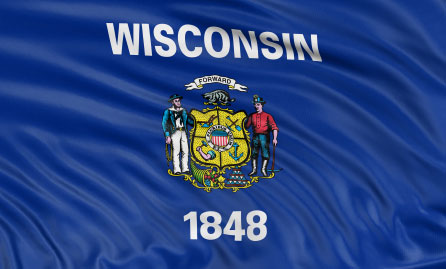Student Loans
Student Loans
College Loan Benefits
Applying for Loans
Choosing a Lender
Compare Loans
Borrowing Amount
Government Loans
Federal Loans
Government Loans
Stafford Loans
Perkins Loans
Federal Direct Loans
Low Interest Loans
Fed Loan Distribution
State Student Loans
Alternative
Alternative
Parent PLUS Loans
Graduate PLUS Loans
Home Equity
Major Lenders
Loan Organizations
Private Student Loans
ACS Student Loans
NelNet
Sallie Mae
Signature Loans
Loan Consolidation
Loan Consolidation
Consolidation Benefits
Consolidation for Graduate Students
Loan Repayment
Repayment Options
Loan Grace Period
Student Loan Discounts
Loan Cancellation
Student Loan Precautions
Loan Forgiveness
Defaulted Loans
Getting Out of Default
Loan Deferment
Loan Forbearance
Unfortunately, the excitement of going to college can turn into something of a reality check once you begin tangling with student loans and financial aid details. So how can you find help?
If you’re a college bound Wisconsin student, a parent, or out-of-state student pursuing a college or university in Wisconsin, make sure one of your first resources is the Wisconsin Higher Educational Aids Board (WHEAB).
The site’s plentiful financial aid information includes:
The WHEAB website also provides a list of Wisconsin schools, along with a checklist of financial aid requirements for each school.
This list includes the following information, all of which is necessary for any school you’re applying to. Make sure to identify these details through every institution you’re considering attending. This list should definitely be one of the first sources you consult when applying for financial aid at any Wisconsin school:

Federal student loans should trump state student loans in your priority list. The reason being is that they have several favorable attributes:
The Stafford Loans are common among undergraduates and graduates, and after a grad student receives the maximum loan amount on his or her Stafford Loan, the Grad PLUS Loan becomes an option.
Also, a key feature of the Federal Family Education Loan Program (FFELP) is the Parent PLUS Loan, an affordable alternative parents that might not be able to help their students attend college otherwise. Learn more about your federal student loan options.
Like many other states, Wisconsin offers a number of incentive loan programs for students pursuing highly demanded fields. The loans provide teaching and nursing students with a certain amount of loan money each academic year.
When the borrower agrees to provide service in a high-need facility or region, a certain percentage of the loan is "forgiven” for each year he or she works in that capacity.
Wisconsin loan repayment programs the following:

In many cases students must borrow private funds to make up for gaps in education costs. Students often choose this option when federal loans don't meet the full cost of a college education. When shopping for private loans in Wisconsin, consider the following:
Private loans for education can be had from nearly every lender and bank in existence, so proceed with caution.
For more information on Wisconsin student loans and financial aid programs, visit the WHEAB website.